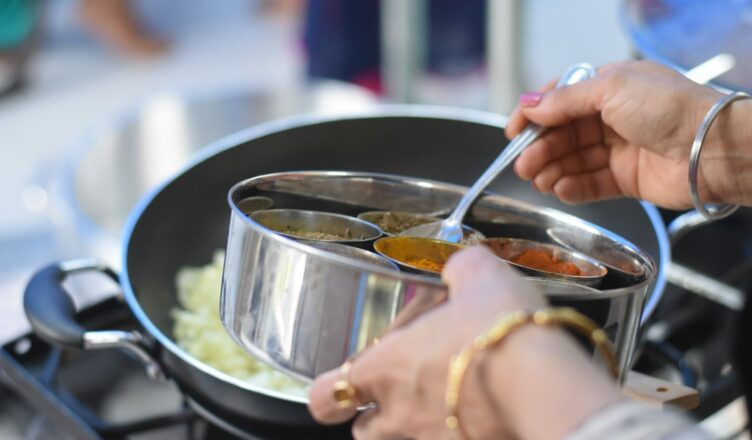Indian Kitchen is a diverse combination of ingredients; the diverse combination of ingredients is due to the diverse availability of ingredients in the versatility of soil across the Indian Region; more importantly, the equipment used in the Indian Kitchen tend to bring out the beauty of the inherent magical and therapeutic properties of the Indian Kitchen.
“But what is more important than the ingredients, the equipment and the soil is the versatility applied to various regional dishes, which is only applicable to that dish and which helps in bringing out the best flavours and at the same time retaining the same” explained a restaurateur who owns an Indian restaurant in Penrith.
There are over a hundred ways of cooking meat, but the Indian way is what scientists even believe helps to retain the protein of the meat without having dehydrated the meat.
INDIAN COOKING TECHNIQUES AND THEIR SCIENTIFIC EVIDENCE :
- TADKA: Tadka, or tempering of spices, is usually done at the end of lentil preparations and curries to lend the dish a spicy flavour; tempering consists of cumin seeds which usually help in anti-spasmodic properties and help relieve the muscles of the digestive wall, tempering the dishes also helps reduce anti-bacterial growth and also regulate bowel movements.
- DUM COOKING OR SLOW COOKING: Dum cooking or slow cooking is a process that applies to the preparation of meat; dum cooking involves covering the dish with a moisture-retaining medium and not allowing the steam to escape which helps the natural nutrients from the bone marrow of the meat to release and enhance the nutritional value of the dish. Bone marrow is rich in calcium and phosphorus.
- BHUNAO – Bhunao or stir-frying is a process of dry frying the spices to release the natural oils and the inherent aromatic flavours of the spice; this technique also adds a distinct colour and flavour to the dishes in which it is being poured or prepared.
- STEAMING OR BHAPA – Steaming or Bhapa is a technique mostly used in south India to prepare Idlis and also in the coastal Indian Region for steaming fish. The exact method of steaming involves steaming in banana leaves, the basic reason being banana leaves consists of polyphenols which consist of natural antioxidants which can kill any microorganisms or bacteria present in the food.
- PICKLING – Pickling is a science involving rock salt, mustard seeds, mustard oils, and jeera and is aged in glass or ceramic containers; pickling any seasonally available vegetable can lead to the formation of probiotics that help improve and enhance gut health. “Traditionally, pickles were made from rock salt, a major component of bath salts that can also ease muscle cramps and gut movements. Thus when you take your next Indian meal, make sure you add a generous serving of pickles. “ explained a dietician who has been treating patients by suggesting Indian food in Penrith.
- DHUNGAR: Indian sages and physicians knew about fat being the ideal carrier of flavours, which is why the technique of dhungar was incorporated to carry forward the dish’s flavours.

